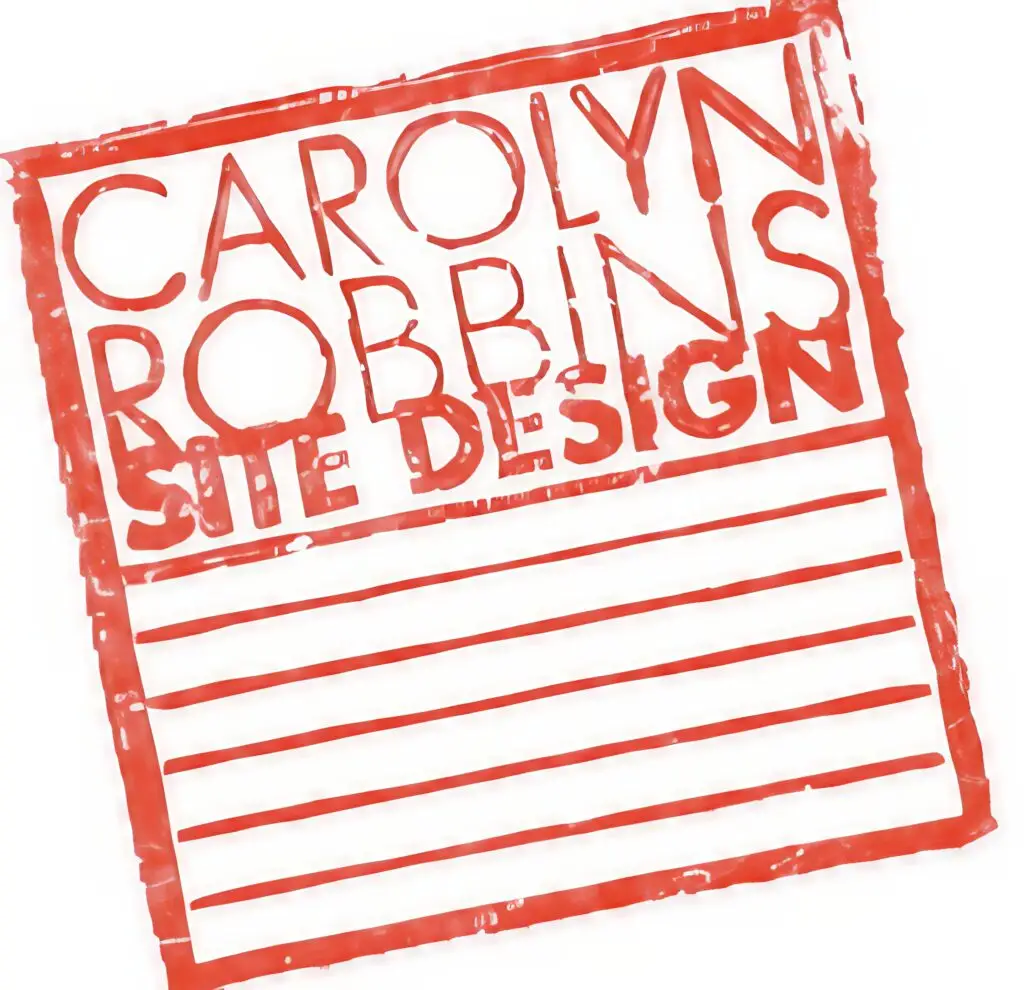How lighting defines your style: Part 1.
October 3, 2025
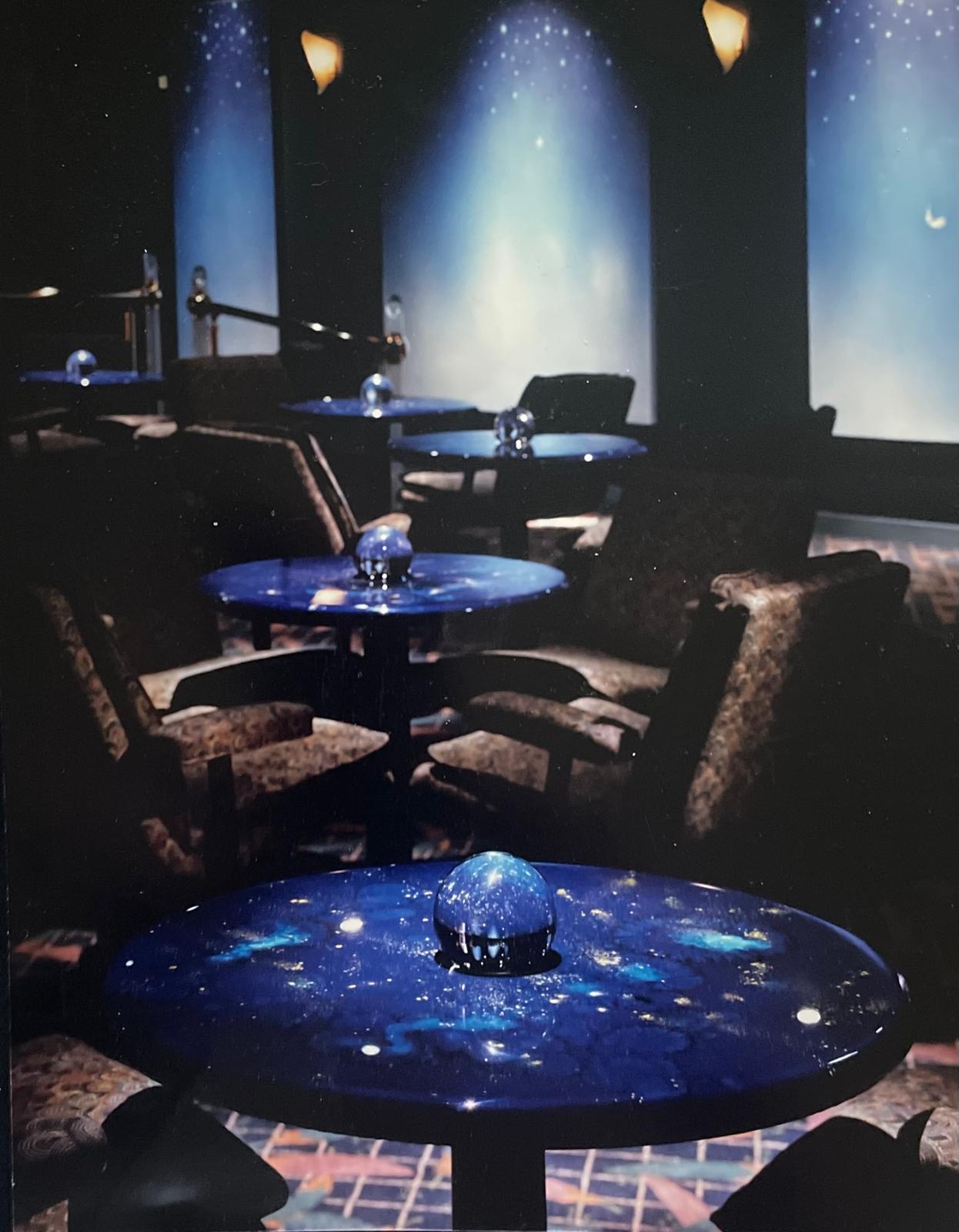
I’ve always believed design is more than what you see. In a major way, it’s also how you feel. I’ve spent years watching light shift across rooms and change the entire feel of the space, depending on the way natural sunlight filters through fabric curtains or the effects of various light beams on a wall and what they light. The magic of lighting is that it shapes a mood, or an experience, or the appreciation for art. Lighting offers excitement and energy to a space.
I believe if you are unique with what you light and the fixtures you use, not only do you define a particular style you have adopted but you enhance the art, the furnishings, the walls or ceilings, you are lighting. If your magazine cover was ‘Unique Interior Design’, it is because you use light as a signature to everything you’ve designed. You may design a rich, lush and detailed room, but without lighting, you’ve missed the point!
Let’s talk about light as the soul of a room for a moment. Lighting isn’t just practical in finding your way through a dark space. It is emotional. As a designer, I imagine the way you feel as a guest sitting in a dimly lit jazz club. It’s late, the day has turned to night and moving from a dark street into the club, is a subtle transition meant to bring the romance of night sky, warm streetlights and misty silhouettes with you, into an interior that mimics, yet illuminates; just what you need to see. Nothing more. Night time audiences feel intimate moods. They might see wall art only slightly, maybe just enough to give them the feel of the space. They might see a stage or the top of a bar. The table lighting is downward only there to read the check. It’s all minimal. As an illustration of this, notice how little lighting is offered in the bar at Cat’s Nightclub. Only enough to engage the viewer on the art walls Or check out the under-lit crystal balls in Banana Max, or the adjacent bar room in the same club. We lit only the art so the quests were allowed to feel like a bird flying through the space with the flock, as shown in the painted artwork over the bar and on the walls. The guests were invited to participate in the event of the room.
When I’m designing a residence, I employ many of the same methods as I mentioned above, yet with more ability to set the mood using dimmers and various adjustments. Warm, golden tones make living rooms inviting; cool whites bring clarity to workspaces and art. Knowing the various types of lighting for warmth and clarity is a bit harder today than it was years back when low voltage lighting was easier to adjust. Now, the knowledge of temperature for LED lighting makes learning a bit more challenging, yet the variety of fixtures is far greater for pin-pointing exactly what is to be lit. Here’s a few notes you might find helpful:
Ambient lighting sets the whole stage—it’s your overhead glow like a sun overhead. Be careful and you can add accent lighting too. Notice the living room in the Fong residence and how this was achieved using one indirect ceiling light.
Task lighting focuses on function as with reading lights next to a sofa or on a desk. Check out the Fongs Bedroom lighting where only closet and bedside lighting were designed. The beautiful views out the window were not to be hindered by ceiling lights. This is also true for under-cabinet kitchen lighting. Notice the O’Heffernan kitchen lighting as an example. Without it, the contrast between materials would be lost.
Directed ceiling-mounted lights can add drama and mystique, not to be directed downward unless with correct pin spots for very particular items to be lit. Ceiling lights, whether recessed or track, should not be directed where people sit. Table lighting can be pin-spotted but only with the correct beam spread of the bulb used.
When layers of lighting work together, they tell your story in how you live, how you entertain, the art you appreciate, the drama you desire and the times of day you like to experience.
In Part 2, I will write about Lighting for dramatic effects, but for now, try various lamps in a room just for fun. You can use clip-on lights and try different bulbs. Don’t worry about the look of the fixture for now. Just get a feel for the bulb choices. Or a good way to get some quick insights for your interior, is to call me, Carolyn, and I’ll come in for a quick consultation. I promise to open your eyes to new ways of lighting and from there you will spread your wings like the customers at Banana Max!
SUBSCRIBE
Sign up to get the latest on blogs.
RECENT POSTS
What is your budget?
August 9, 2025
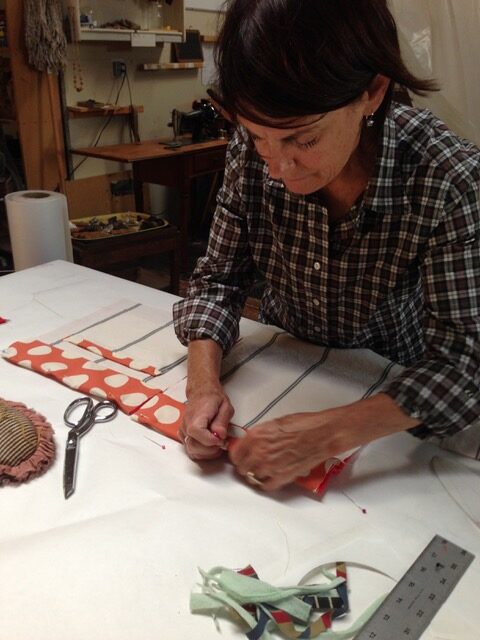
The first job where I was given free reign to do whatever I wanted, I worked in display for Macys. I was 25 years old and I remember thinking: ‘Whats the feel I want to create? Who’s the customer?’, yet the most concerning questions were: ‘What are my constraints? What can I do within them?’
After forty years of design work, the answers to these questions still prevail.
Often, the best advice I would give someone approaching me on solving a design dilemma, stems from the first constraint: how much can they comfortably afford? I want to share a few ideas around this subject.
First, people in general feel that interior designers spend a lot of their client’s budget on furnishings or on contractors building projects that may be undeterminable situations, quite extensive and often out of control. For this reason, a potential client might feel uncomfortable to answer the question: How much do you want to spend? Yet for the designer the answer sets a path to help, avoiding a mystery of how it all turns out and at what cost. Without knowing the budget, how can materials or the level of construction be considered? I can design something from a rudimentary level yet there is more chance of it changing, without a confirmed budget. It’s much easier to design with affordable materials and knowing the time that contractors will take to construct, than to wing it.
Before getting into the nitty-gritty of what is needed to make a project really work, I must consider two main components within the proposed budget. First, what aesthetics the client(s) appreciate and second, what functionality has to occur for them to live in the designed space and be happy. When an assessment of these two elements is not done, it’s like sailing against the wind. I have been in projects where I am not in control of money, where the contractor is in control or the clients attempt to manage the flow of costs, and it usually becomes quite complicated and messy somewhere during the building of the project. When this happens, at least one of the two components I’ve mentioned, hasn’t been addressed.
This doesn’t mean that a budget can’t change, because it usually does. Yet when you start with an idea of what you feel good in spending, it’s the designer’s job to stay earnest in producing a set of plans and an estimate within those guidelines. Then, the wind changes and the sails carry the project to the finish with ease.
Ok, let me attempt to be the client for a moment.
I imagine myself as you, the client, who is asked by the designer, “How much do you want to spend?”
I might be thinking “Well I’d really like to spend the least but what if she can do it for less than I suggest? Am I putting myself at a disadvantage?”
Perhaps you sincerely don’t know and you propose a figure lower than what you really could spend and after the design process, you begin to add to that budget. How might this work? It’s usually not difficult if these additions happen in the initial phase.
Then there is the question: “How long will the project take and how long is the designer engaged?” These are also part of the budget constraints and can only be answered in the context of whether the designer is acting as a project manager/designer, or whether the designer is strictly designing, giving you ideas and drawings.
I had a client back in the eighties who came to me and said “My partner and I are airline pilots. We have a work break coming up. We don’t have very much money to put into a venture but we met a wonderful chef, liked him and want to open a Japanese restaurant. How much will you charge us to design if we do all the building? So we went about building a restaurant with a budget of $10,000., my fees included. In the end it cost about $13,600. It was a very successful place for almost 3 1/2 years. The restaurant sold for $250k. The best part for me, was that Sasaki made the cover of Interior Design magazine.
If a designer is to manage a project, which is the case most of the time, I can only advise a tight working schedule to avoid extra costs. Sometimes penalties for delays work, if there is a lot of money involved. Most of the time it’s making sure there is a good relationship between all professionals and the client and hopefully a track record of the designer and contractor working together. I can’t urge clients enough: create a good working calendar of checkpoints. Just like when you were in school….you studied more when there was a test. In this case, the test is the completion of each step. Studying is doing the daily work of making sure materials are on site when needed and contractors show up when scheduled. Its a fine tuned system and certainly one that lives by the clock, especially if a
budget is to be regarded seriously.
Moral of this story: be conscious of estimating well in the beginning and understanding the design before beginning. Create checkpoints. But most important: know what you want to spend and see it laid out in a plan before proceeding. Good luck!
SUBSCRIBE
Sign up to get the latest on blogs.
RECENT POSTS
A place of intention
September 27, 2024
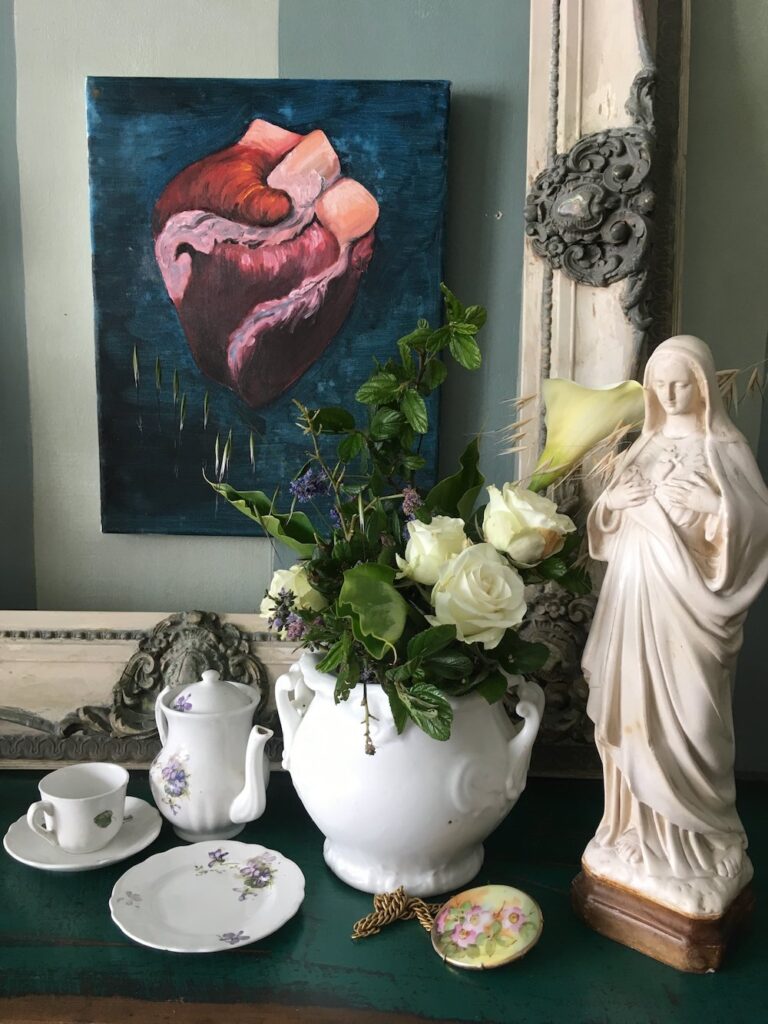
For many years I have seen intention pave the way towards gratifying goals and completions, in my own life and with my clients. As a designer, I strongly offer this exercise: find a kind of special spot, an alcove in the wall if you have one, but if you don’t, maybe a ledge or a pedestal. When locating a place, choose somewhere that your eyes can’t help but focus on each day. Perhaps this could be at the end of a hallway you traverse. Or the window sill above your kitchen sink. The corner of a room that you clear out. If you have a small end table or a chair; this works too. Find a spot where no things are dropped coming in the house, or ‘to be put away later’. A place that stays free of ‘stuff’. I think you know what I mean.
Now what you put on your pedestal or shelf, reminds you of the best part of you. It’s your connection with everything good and precious and divine in your world. It’s a sacred place but not necessarily religious. I believe placement has more purpose than making things beautiful and functional. Design with a purpose embraces intention….strong, clear intention. And when you direct this intention with a lit candle or a flower in a vase, a photo of someone who has helped you in the past, a prophet or sage you pay homage to, you are inviting their memories, their wisdom, their esthetics. Or you could place a stone you found when you were a child. Perhaps you want to remember to go to the seashore more often, then let this small stone remind you of the times you’ve had there. Anything and everything can happen when you use visual reminders.
I’ve seen manifestation over and over and over again as a designer in and out of houses and businesses, for many years. If you select a place…it becomes about you. If there is a phrase written on a piece of paper or an object you have, like a piece of art, a figurine or a music sheet that embodies who you are; then bring them out! Remember your intention. Make this place a focal point and give it life by taking care of it. Pay attention to this area each day, if you can remember. Maybe change a beautiful leaf in a jar, so that it is always fresh. This special place, whether you light a candle or add fresh flowers, will remind you of who you are and what you are capable of. You won’t get lost along the way if you take care of this place. The things you place there are reminders of your greatest strengths, whether brought through from struggle into clarity, or from your ancestors with reverence or from those close to you today. Give thanks to all of who you are and where you’ve come.
SUBSCRIBE
Sign up to get the latest on blogs.
RECENT POSTS
To keep or not to keep?
November 22, 2021
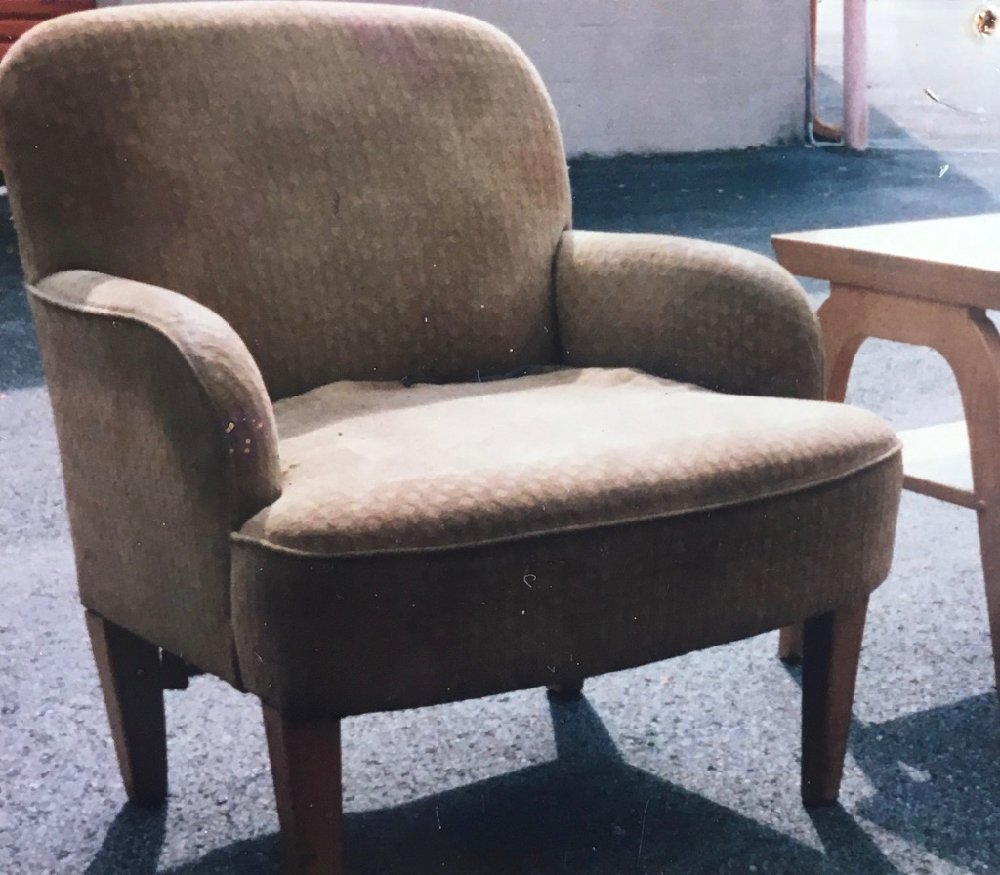
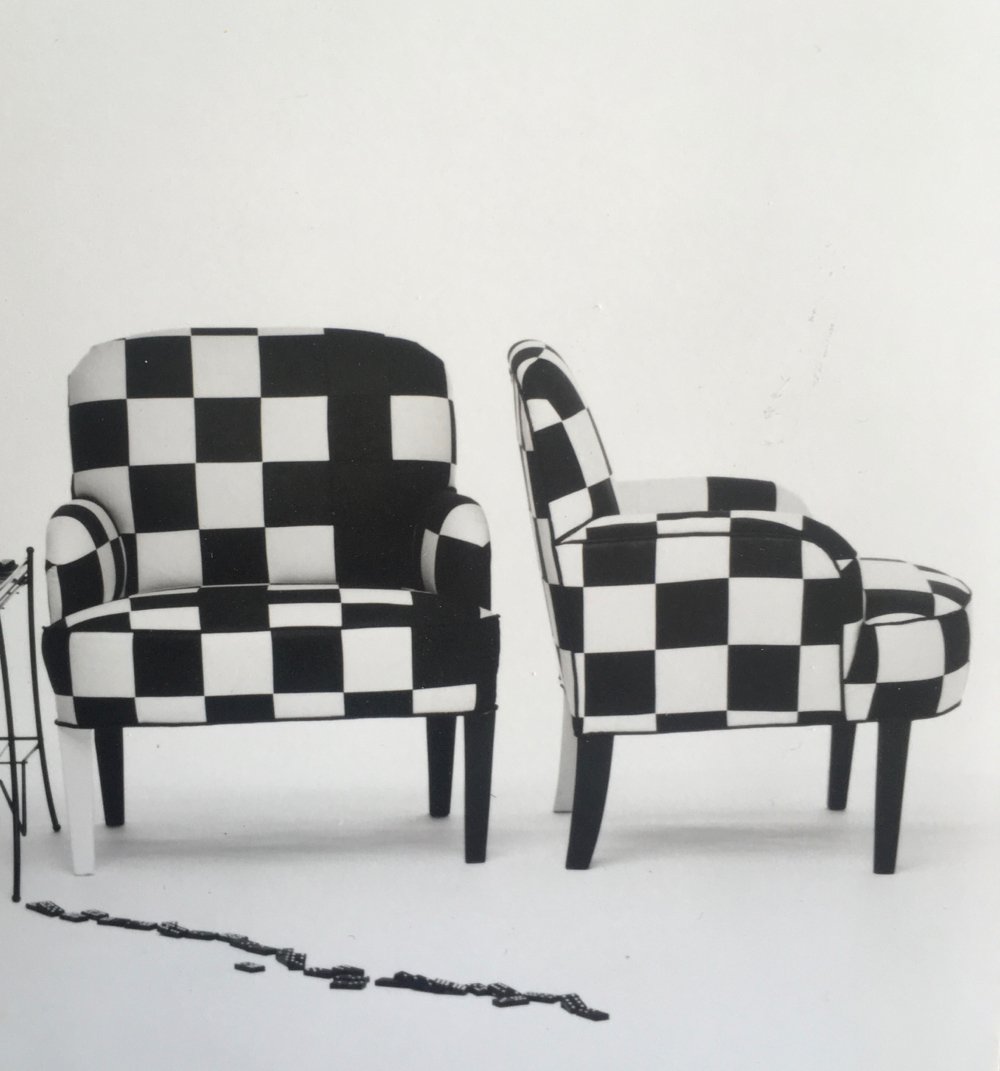
As a designer, I begin with what exists, considering its possibilities before proceeding to buying new. When an initial inventory is taken of my client’s furnishings: the sizes, the functions, the various uses, I expand on ideas. Often new clients want to replace what they have. They are tired of the look they have. But they haven’t really studied the possibilities. The end result of a finished home (and commercial space) is usually a combination of new and ‘adjusted’ original furniture.
Furniture doesn’t have to fit into a particular room it is known for. Take a bed side cabinet for instance. It’s not only good in a bedroom. Small cabinets are good in bathrooms, in children’s rooms, the base for a large plant behind a big chair in the corner, in nooks where you can’t add a large piece of furniture, even inside closets. A small cabinet can house garden tools on the back porch, if given a good coat of sealer to protect it. By taking a cabinet out of the bedroom, and seeing it as box on legs, other possibilities bloom. This is true of almost all furniture.
Once a piece works in size and function for a space, then I imagine the various finishes suitable for the planned interior. I take out drawers and put shelves into dressers. I open up the back of a bookshelf and use it as a room divider. Or I upholster a chair with quilted checks, painting one leg a different color. I have fun.
The more ways I consider, the more possibilities exist in furniture re-use. Sure we can go out and buy something new, yet we can’t buy back history or the skill of previous craftsmen!
SUBSCRIBE
Sign up to get the latest on blogs.
RECENT POSTS
Video or bust?
June 15, 2019
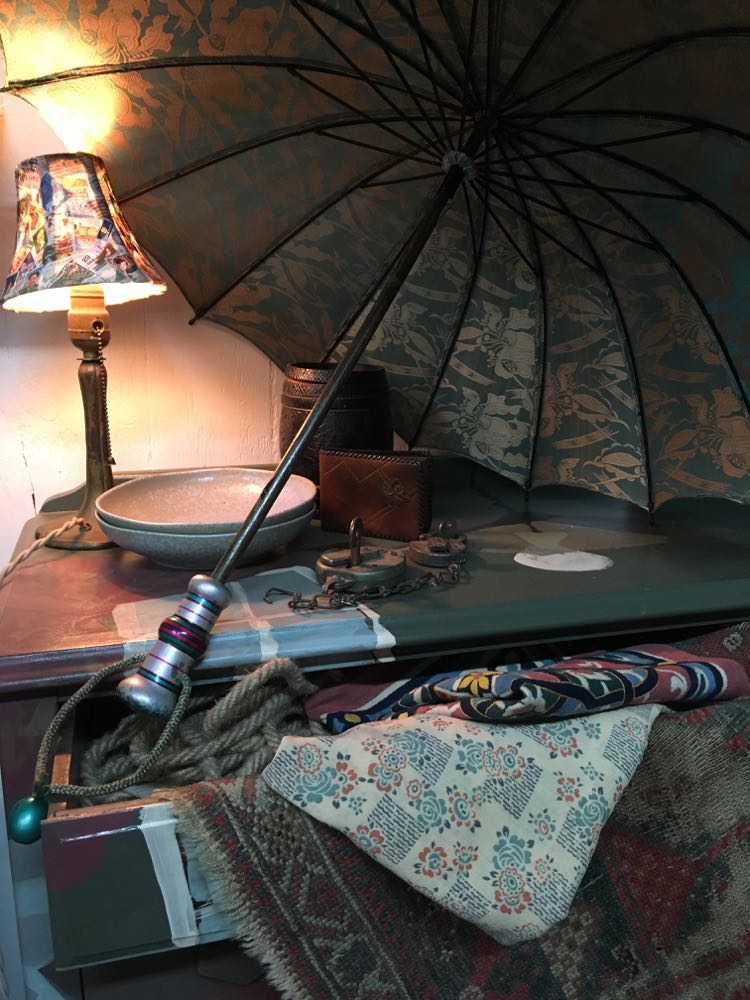
There’s a lot of talk about video in marketing today. Infomercials for the soul, or not for the soul…which is it? I don’t think theres a debate about whether we are short on time or not. We are catapulted into the future with so many channels to tend, we want the easiest way. . . gotcha. But is video the way?
Back in 2001 I was developing the designs for a start up, Quious, the first messaging company planting their roots in SF, from Germany. At the time, I was focused on the engineering of this 150 desk project, rather than what they were selling. The concept of writing everything into a phone seemed so foreign to me, that frankly I wondered if it would ever take off. But here I am years later.. thumb’s a blazing. Who could have guessed? Will video presentations, across all channels, take over in the same way?
These days it’s not enough to post on instagram, set up live stories, use various apps to effect an image or add type, but there are a multitude of other sites like Pinterest, Houzz, Facebook, and heaven forbid: working on one’s own website, to take care of. Along with all that, we have the task of learning to be the producer, actor and writer of a conveyed message, on live tv! What are the ins and outs of this idea? I think about this often these days. It’s come down to one big question for me: What do you want to say and how easily can you say it?
If I could come back to the ‘video infomercial age’, from the future, I would like to know where we are being led. Are we crafting a talent or not? What are we gaining (yes, obvious exposure and quick digestion but also…) and what have we lost? Has the written word lost it’s sizzle?
Whether I am personable on camera or not, I must learn to be authentic in front of one if I get on this video train.I put concealer under my eyes because it looks better…or should I be raw? Do I hang out in my lounge around clothes or dress like I’m going to town? What do I say, when I click my camera ‘on’? Must I remind my potential clients of their needs before the remedies? Should I identify with the problems my clients are having and be the genie out of the bottle? If I do this a hundred times, will I get better. Probably. Yet, do I want to? I’m wondering how that works for others.
What could the future do for us, but make us look older, less likely, to want to say ‘Hello Camera!” ….yet the pattern we’ve created of all these cute videos popping up on our social media sites, can not be set aside easily, if we have a change of heart and don’t want to do them anymore….if we stop will our audience think we died?
So what to do? For me there is only one solution and it’s pretty simple. Whatever I do I do it for today. If it feels right then I post. If it doesn’t then I write. If I want to set up a light booth and have the right microphone and chatter away in front of my phone on a tripod, I give it my best. But with one common thread:. time is of the essence. The beauty is not necessary in the medium. It’s in all mediums. It’s in the choreography of using few words with the most impact and clarity.. I won’t be stuck with one way of doing things. I can stretch and be a better author and writer and thinker, and tv persona if I want, no matter the day. I won’t be tied to the trends of the time. I will continue to value other people’s time as well as my own, with offering the one best thing: the ease to comprehend an idea. Plain and simply wins the game.
SUBSCRIBE
Sign up to get the latest on blogs.
RECENT POSTS
First, have a good pow wow.
June 3, 2019
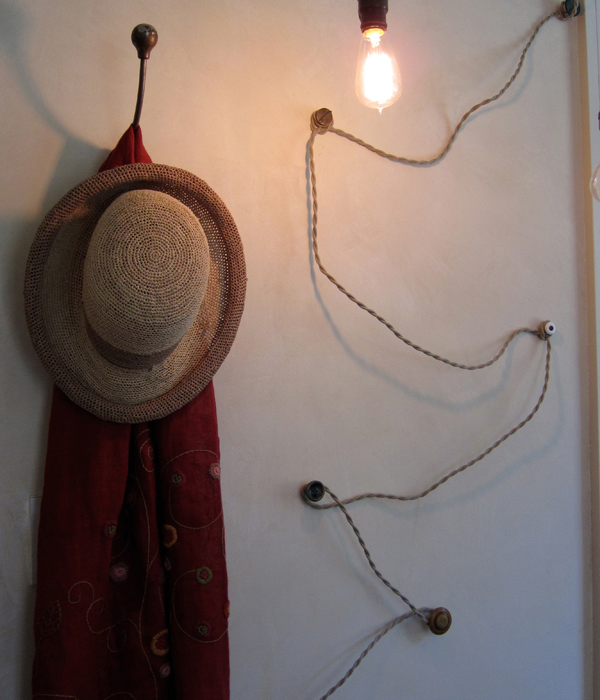
I’m going to be brutally honest. So often on the first visit, I hear clients in an almost dooms day certainty, state their worries:
“ I want to find everything I own. Can you do that?”
I think: “ Hmmmmm… where would you like to start, do you have a range you want to spend and how long do you have to complete this task?”
or they might ask:
“I want it to look like we had a designer fix it all up. You’ll do that right?”
I think: “I would rather it look like you’ve got the taste and I assisted you install it.”
and quite often I hear this one:
“If you send me in a direction, I can find a lot of what I need. I just don’t know where to look.”
and I think: “Would that be advantageous? Usually not. Maybe with a plan, but not without one…hmmmm, I wonder if you will you believe this?”
Then we have a dialogue to bring it all out. From my perspective, sitting down and clarifying these differences, before beginning…and signing a contract, is essential. No assumptions. Just plain talk. What do you expect of me? What do I need from you to make a successful project happen? Oh, you don’t know your budget? Do you know it can cost more, just because you don’t know what you want to spend? If I don’t know your budget and design outside your affordable range, your project may have to be re-designed and more cost.
My advise is to always have an initial pow wow. Write down all your questions and make sure, your designer does her (or his) due diligence to answer them all. Here’s the best question asked of me, by a potential client:
“How have you become better over time and what lessons have you learned, that you want your customers to benefit from?”
Infuse yourself into the life and business workings of your designer, before setting foot into what is usually a long construction project, which may or may not be something irreversible once the train leaves the station.
SUBSCRIBE
Sign up to get the latest on blogs.
RECENT POSTS
Clutter or convenience?
July 29, 2018
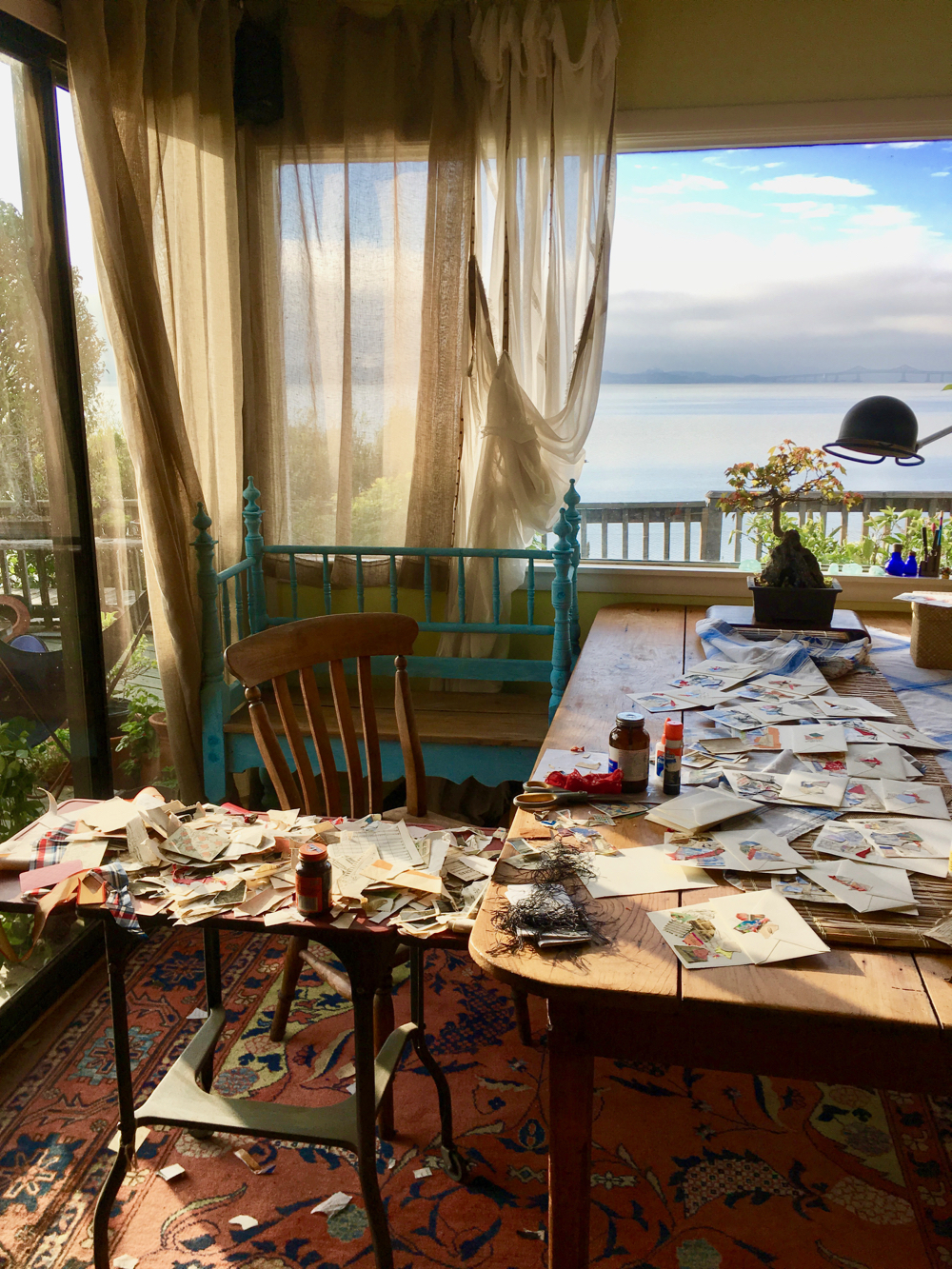
I like to write on Quora, a website for contacting professionals to ask them questions. Sometimes I ask. This time I answered. William Vietinghoff asked: Would you rather have a home that is functional, but cluttered and messy, or a home that is furnished sparingly like a showplace, but inconvenient for day-to-day living? It was an excellent question and one often asked by my clients.
Here was my answer to William:
The difficult part of the question is whether cluttered and messy is functional. To some it is and to others, no. So first we find out, especially if there is more than one person living with you. We take an inventory. If you are living alone, then what are you looking for, a bit of both?
I doubt one would choose inconvenience, so the first part of your question might be considered bias towards the last part. Here’s a few questions for you: Do you know the constraints of what is your messy? Are there containers for your type of ‘mess’? Do you appreciate clean sparing modern design? How do you see the two worlds living together? If you can’t answer these questions, you probably need a good designer! I’ve solved this kind of situation time and time again. It’s called designing for the ‘normal client’!
Here is William’s response:
Carolyn, you are right. There are always better places to put things to avoid the “cluttered” look without wrecking the functionality.
SUBSCRIBE
Sign up to get the latest on blogs.
RECENT POSTS
Leave the bed unmade.
April 17, 2018
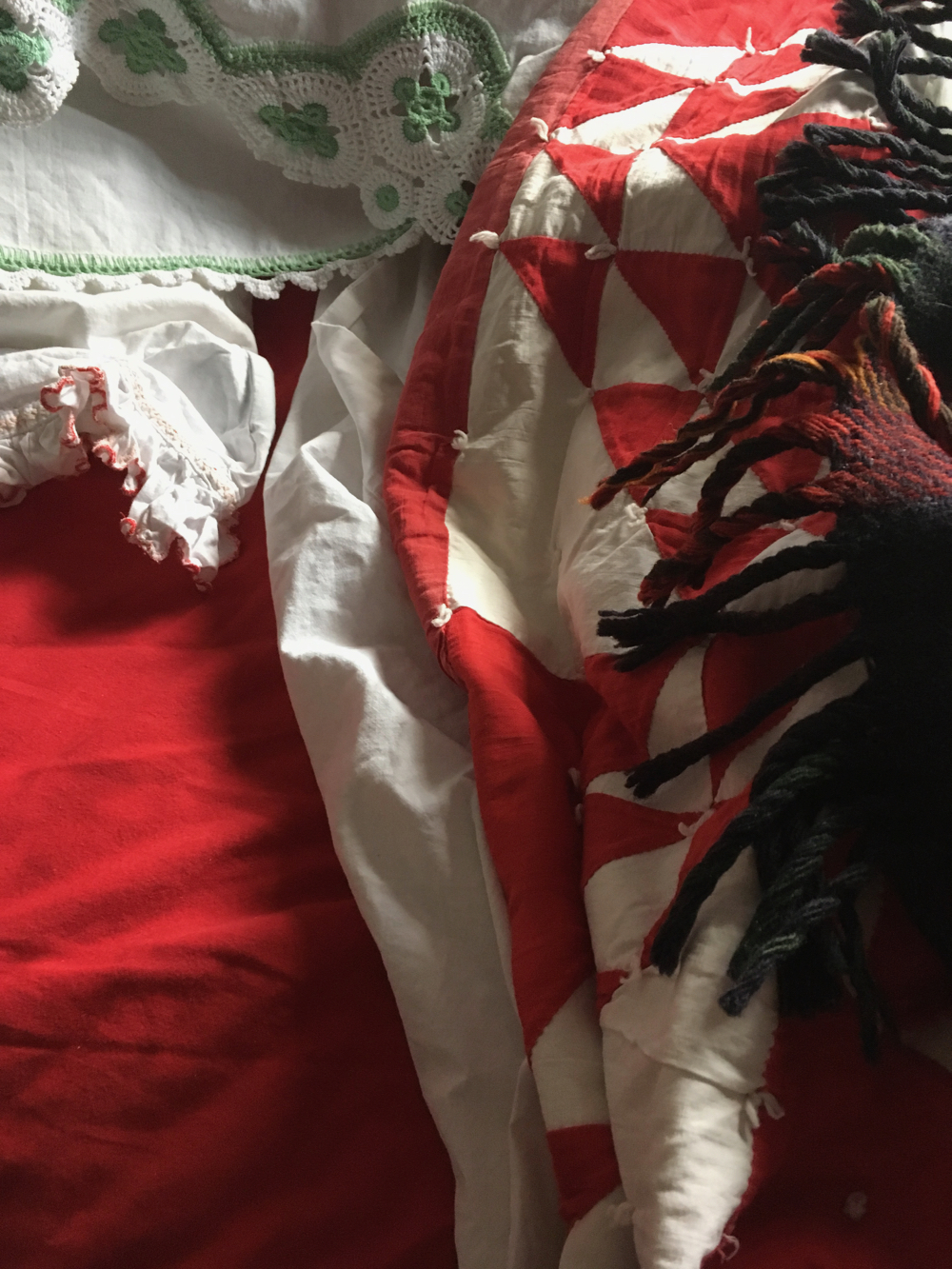
Have you ever left the sheets draping on the floor from your bed? The blankets thrown on top? Do you ever rinse the dishes and leave them stacked in a tower next to the sink with a fresh flower in the top bowl, observing the pottery mix of designs….for awhile….maybe longer than you would normally?
How do we organize and how are we ok with the mess? Both show who we are. Being in and out of people’s homes, I am fascinated with the tendencies people have. The patterns of their behavior they have with their things. Do they always live a certain way or give themselves liberty to be the opposite?
Who are we if we don’t have an opposite view? Are we polarized by our habits, with our new ideas rating acceptability, by our standards?
I’ve been thinking about the art of interior design. When do clients embrace it and when don’t they. When does decorating become art? Years ago, I commissioned my friend Carlos Alfonzo, to complete a large scale painting for a client’s house. The clients asked that I give Carlos a color palette of colors we had used in the interior. He cringed and so did I, of the request. We both felt art should not have to color coordinate with furnishings.
Later he presented his painting with no colors from the room. He was a free artist and his work was his liberation. When the clients saw the painting, they asked me to go back and request he add certain colors. He refused, as I suspected, and he kept the painting, not receiving his payment. I felt sad, yet as an artist myself, I understood.
Carlos became one of the biggest modern artists of the eighties, especially in Europe at the time. Ten years back, the Museum of Modern Art in Miami, recognized him as the artist he was, with a one man show. The Hirshhorn Museum in Washington DC collected a number of his pieces.
Needless to say the clients lost not only a great investment but the insight that color doesn’t matter. Just like beds can be left unmade. Sometimes woolen patches make the sweater. Leaves fallen on freshly raked ground, tell a story in their haphazard arrangement. Things are by nature unpredictable.
Yes, we need the well made plan. We will always have our habits. But it is the broken habits that often tell another story. It is the art inside of the design that is the creme of the crop, the tell tale sign of the artist in all of us. The helter-skelter of our true nature, reveals the daringness of who we really are.
SUBSCRIBE
Sign up to get the latest on blogs.
RECENT POSTS
Personal style versus market style.
September 22, 2017
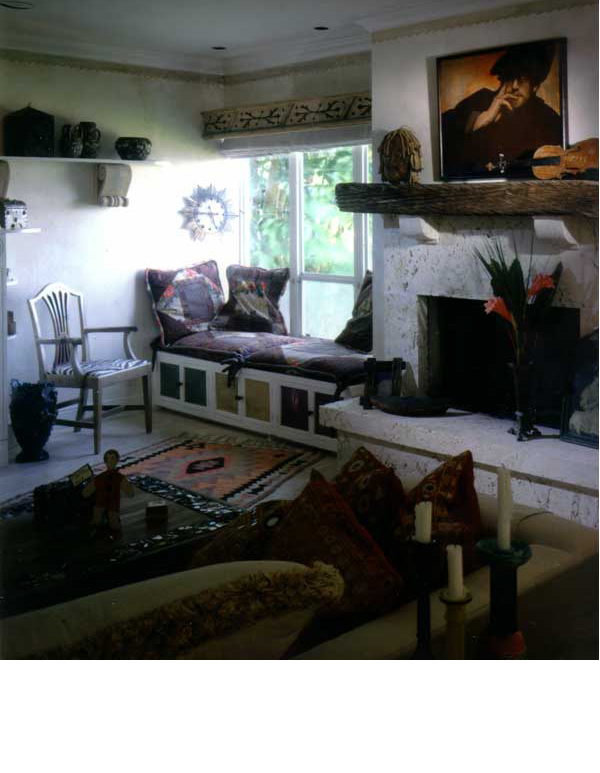
When I designed a house in Miami Shores for the Rosen family, I remember the question Jennifer and Steve asked me, right from the start, “Can we use our old broken tile, bits of artifacts and nic-nacs we’ve picked up in our travels?” As a fairly new designer to residences, having built mostly restaurants and hospitality projects, I remember being a bit timid with the prospect of building anything permanent into their home. Maybe we would make a mosaic cocktail table or a threshold at the front door. It occurred to me though, over the time of working with them, they had adventurous spirits and liked the idea of effecting their home with their own personal style. I followed their cues. Eventually we built a mosaic embedded border containing fragments of broken china, mirror, marbles, broken tile, silver flatware and charms, into the coral stone floor slabs, in their kitchen. I designed various style kitchen cabinet doors from lath scraps, chicken wire and old pine planks washed with a dusty olive stain. The artful mosaic was used in the backsplash too. The stainless steel appliances were a nice contrast to the earthen look of the stone and wood of the farm style cabinets. In the end, their home took on a very individual and unique look unlike anything shown in the market place at the time.
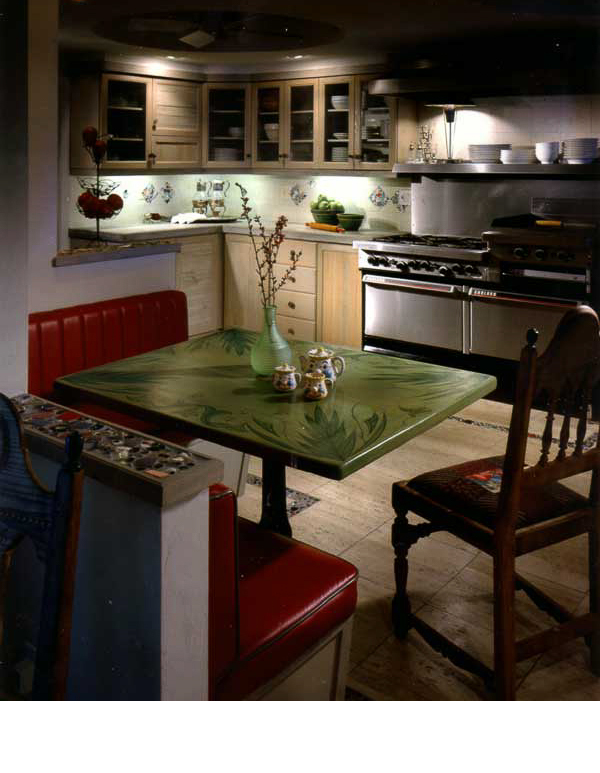
Since then, I’ve always explored my clients tastes before designing. Sometimes it takes a few weeks of intense exploration. What color does the man of the house have inside of his car? What color ties does he wear? What color was on the walls his wife picked out in their first apartment? What kind of things do they buy for their home together verses individually? As time progresses into a custom interior remodel, the spirit of my clients comes out in the choices we make. I act only as a beacon for what I’ve seen them embrace before. Often it’s not the torn magazine articles they show me, although it certainly indicates preferences. It’s the history of two lives, where they’ve lived, what they’ve collected, what they’ve inherited and of those pieces, what they choose to keep or have never liked. These are true indicators of how a project develops. Then the choices of modern mid-century or arts and crafts or Asian accents are made. The market helps us find inspiration, but the style of those seeking to build an environment is always the jumping off point. It just needs uncovering. Once I find the vein of gold in the individual style of the people I design for, the process of designing is ten times easier.
SUBSCRIBE
Sign up to get the latest on blogs.
RECENT POSTS
Grace comes in many ways.
April 3, 2017

It’s taken me almost four years to create and find an inventory of products and learn what it takes to put up an on-line store and a professional website. That’s not including the two years before of failed attempts with WordPress and Drupal on two websites. Those were the years of customized websites, before the age of template platforms, when viewing on all devices had to be rendered well, to succeed in a launch. Yes, it was brutal losing the money on what never happened and probably worse in archiving the artwork of unusable web pages. To better illustrate this: imagine preparing a complex dish by shopping for the ingredients, chopping, blending, tasting and then…the oven doesn’t work. But hey, I’ve only got one life to live and being that I’m not a quitter, the path to get here, to this very moment of completion, to this sweet side of “Yes!”, means I’ll never have to go through that again…whew! (big long sigh). Although, don’t think for a second I’m not aware of the glitches going forward. Something to look forward to and be challenged by.
Here’s the main thing about shopify and boxify, canva and campaign monitor and all the other programs and apps for making it all happen: we are living in a brand new constantly changing world of technology, both with milestones and limitations daily. Each day we can render something possible, that wasn’t yesterday. When I close my computer at the end of the day….a day where I didn’t have the pleasure of designing an interior project or stitch the trim on a bag or sand a wood surface smooth for painting or re-wiring a lamp…..I’ve gotta love fixing a program glitch. I find satisfaction in the help given to me by people smarter than me. They bend me and shape me into a tech savvy user. I read help pages and search forums as comfortably as making my morning coffee. Sometimes it’s terribly boring and tedious to say the least, yet I know the reward in doing it, lies close behind. It’s impossible to do what I have done without reaching in and appreciating the technology that is truly magical. I live in and around it everyday…especially the nerdy kids bopping along the streets of SF, clutching their phones, plopping their brains behind screens all day, making it possible for me to create a place to sell and teach and learn. They help me when I’m the only senior in the meetup with my hand up! How lucky to live in a place where I can keep building new things and stretching my brain. What one program can’t do, another crew of brainy kids can. Whether it’s configuring the size of a box to hold many boxes or attaching graphics to an instagram post or keeping track of who went where and what they found there. At the end of a frustrating day, when one small glitch takes me inside the maze and back, I stand awed by what is possible on a world wide stage. That I can take an old lamp, make a custom shade for it, photograph it, write a little story about it and show the world….. that is what I call remarkable.
Sometimes I miss my studio with visions of what I can transform in collaging old newspapers or cutting up an old motorcycle jacket. Perhaps like leaving a child at school for the first time, it hurts to leave my projects unfinished on my work bench, only to sit for hours tackling tech mazes. There are still things like snapchat and why we ‘like’ something on social media instead of writing a word or two, that I don’t get and maybe never will. Yet with all of its challenges, I think I’m kind of a tech junkie with a message of saving resources by building cool stuff. I try to keep the website work balanced between the taste of a perfectly ripe avocado at the farmer’s market or the hand stitching of lily petals or wandering the city for hidden treasures. Balance is the key when you aren’t of the tech world, but then you are.
I could have been born in a covered wagon with my parents crossing the great plains. I could have scrubbed my fingers raw on a wash board, lost a child to typhoid fever or had to stoke the coals for a pot of tea….but life has been good to me. I’ve learned the techno two step while foaming my milk with the press of a button! Who can beat that?
Here’s a big huge virtual hug of thanks to the people who made my new site, antaresfurnishings.com, come to life. Without them I could never have gotten here! They are:
Suzie Aguirre was a calming influence while moving a lot of inventory and entering data.
David Bishop enlightened me to exchange artificial lights in a studio shoot, for natural light.
Alexis Castro posted with patience and reassurance beyond her years.
Daniella Castro gave me the straight talk when I most needed it.
Jeanne Claus gave me design wisdom and gracious understanding while building my inventory.
Vianney Fernandez gave me inspiration in using hand made materials.
Lyle Fong who in his blunt force style, always made me nod my head in the affirmative.
Dolores Heeb edited my copy into the wee hours and made me look better.
Ashley Johnston in her infinitely patient way, worked with me side by side with everything.
Loel Mitchell conceptualized the unrealized custom website. She set me on my path.
Paul Perez at always the right moment, made development fixes no support staff could touch.
Rob Robbins dedicated his time making a workable shop and solving innumerable problems.
Michael Szymanski became my analytical mind when Ms. Carolyn Artist got a bit wacko.
And to all of my friends who offered many hours of consultation and support, thank you.
SUBSCRIBE
Sign up to get the latest on blogs.
RECENT POSTS
Finding a balance.
January 13, 2017
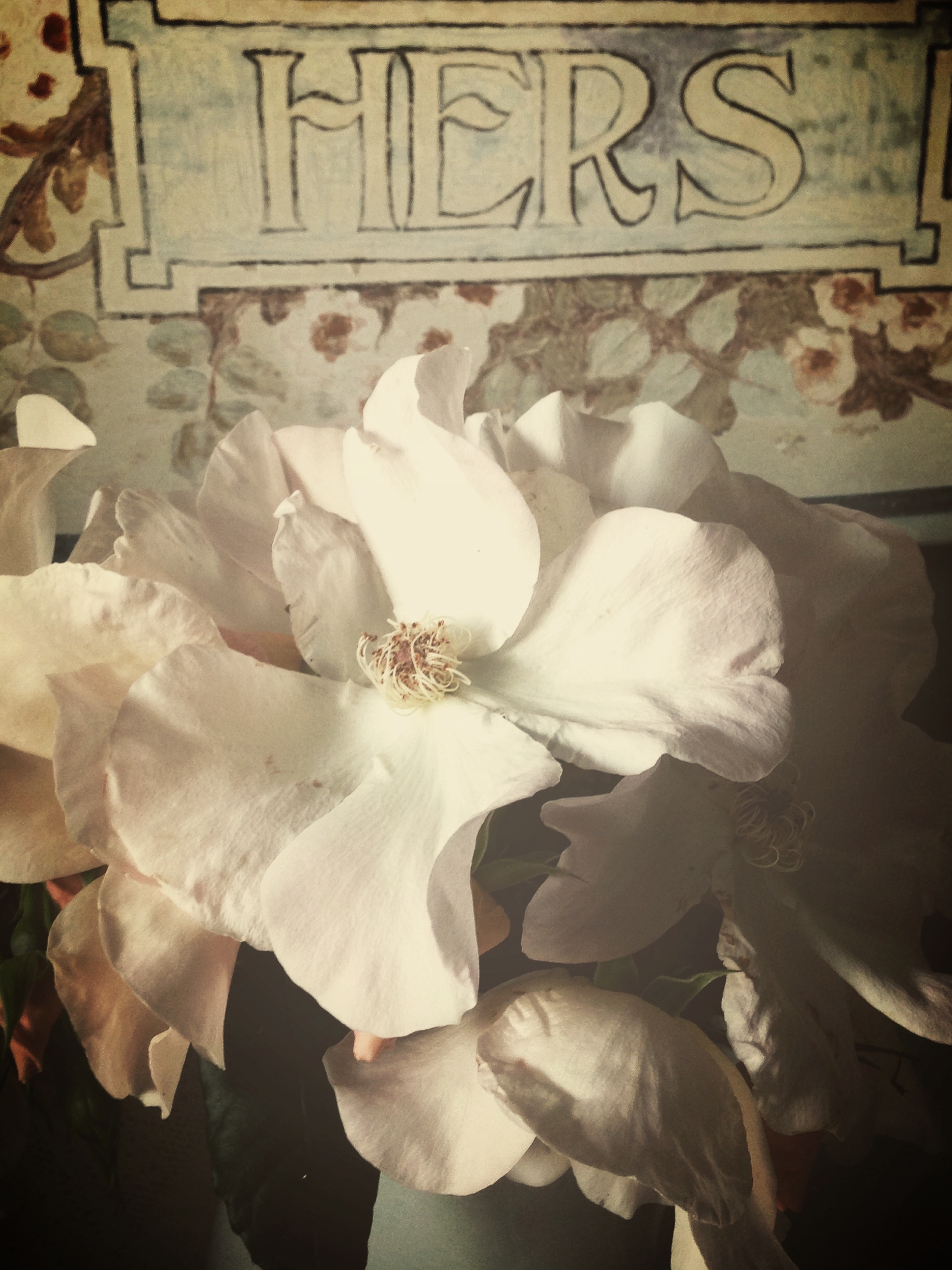
I’ve been kind of a snoop these last two weeks. I’m in the process of surveying my friends for do’s and don’t’s on classes I’m building, most likely offered on-line. I’ve gotten over feeling intrusive. At first it felt so odd to ask people about their design habits or desires or frustrations. I’ve never minded asking people how they live, especially if I am designing for them, yet asking about design habits is different. It seemed more personal….which I suppose it is.
How can I design a class without knowing what people want to learn? So I ask. From the answers, I’ve determined there is generally a lack of interest in finding the balance between the function and the esthetic nature of a space. It’s the sort of thing I think about every day. In the branch I bring in from outside, or the color of a square on the wall. Hmmmm, maybe because I’m a designer and a kid at play? Yep. Duhhh.. Yet I believe everyone is a designer. I contemplate the inclusiveness and the difference between taking an account of how we work or live and making artistic choices in changing a space.
Steven Covey in his book: Seven Habits of Highly Effective People, taught me: “Seek to understand before being understood”. Those simple words changed my career at a crucial time and helped me remember to listen first. Really listen. How does my client feel? What drives him or her or brings happiness to their lives? When I have these questions answered, then I can design. Before, I might as well be threading a needle in the wind. Only through the eyes of my client, can I view the world I am entering, if I am to design for them. I become an actor of their life and sometimes I am two or more actors if there is a family living in a space. Or I become the public impressions of a business. The constraints of the space, the existing furnishings, the way entertainment time is spent or meals are eaten or if there’s a need for a work station among children playing with toys. This is all evidence. From this investigation, bones are built. The first steps are the functional bones. After the bones, then artistic decisions are garnished from ‘who is the client?’, if I’ve been privileged enough to find out. What inherent and driven styles emerge? Is the client aware or not of their style? My mission then, is to learn how the functions of the place play a part and then, who are the people? What is their natural style? From years of experience, ever person has a style. Very unique. Very their own.
How might I teach this balance of function and esthetic, is my first hurdle.
I ponder two questions for a person wanting to design on their own, or work with a designer.
Have you listed all the functions of the space you are living in, or working in? Do you know your own style and use that knowledge, when you consider the task at hand?
It seems natural to me that before looking at what the market suggests, explore history and the present the life you are living. Look for the signs of what makes up your very unique individual life.
I am always changing my style, adding things for a while and then moving them out. Yet certain pieces usually stay with me. I have a little gypsy-hippie from my Mill Valley days so I like slouchy and informal. Pillows and low light. I also a have a bit of South Pacific Mid-Century Modern Miami, from living in South Florida for twenty years. There are usually orchids growing in my bathroom and old bark cloth remnant in my furnishings. I like woods more than metals so I suppose a bit of wood elf is in me too. Rich color and grain I prefer. I set one of my bonsai trees on a pedestal and imagine I’ll create more of a Zen like space someday although I have some already with a wooden Buddha and blank walls. I am past, present and future…and the future shows itself in what temps me from the outside world right now. What is new that appeals to me? How could it be part of my present?
I believe if you find your style, you are ready to begin an interior.
SUBSCRIBE
Sign up to get the latest on blogs.
RECENT POSTS
Hostess of the party.
December 30, 2015
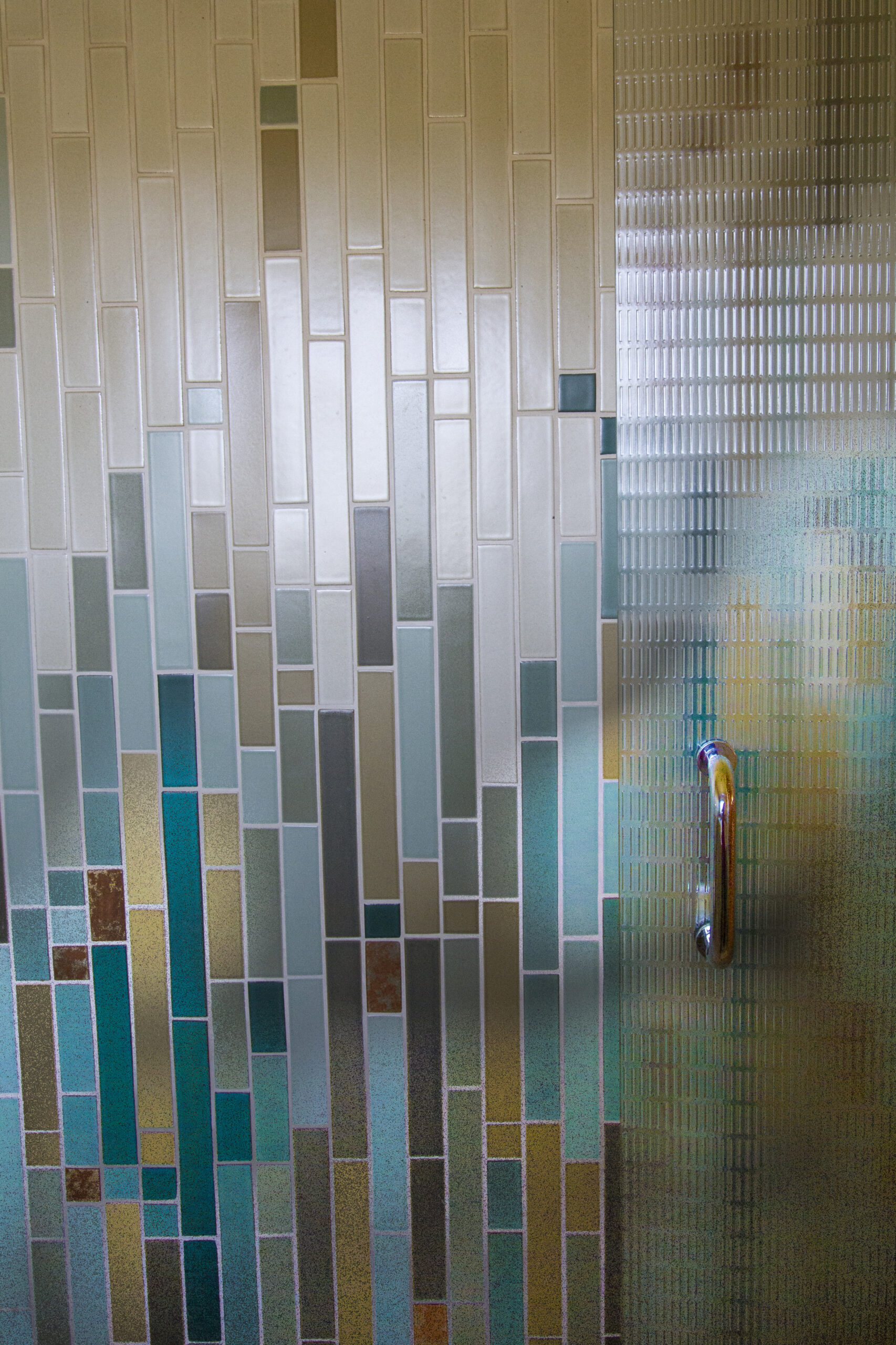
When I first lay out a project, I ask: “Who am I working with?” like it’s a first date. I don’t ask, “What is the budget?” or “What style does the client prefer?” The reason being: these questions are secondary to the intuitive process of who is the client and what potential lies in the site itself.
Imagine the character of the kitchen cabinet: she’s a modern gal, or is he a studious collegiate type? Or the character of a fireplace face: is she ornamental or is he minimal, earthy or slick? Some of these imagined characters might be my client’s preferences but not necessarily, just like we have friends that aren’t like us. I’ve seen furnishings clients love, that remind them of their ancestors but aren’t necessarily their style. How can they become their style is the question, or will they ever?
If I start with a party of materials in a room and I want my guests (newly added furnishings, embellishments, architecture, landscapes etc.) to feel comfortable, I introduce them to what is a common thread between them, like a good hostess might do. The blue of the skyline out of a Miami high-rise might be reason enough to use the same shade of blue for piping on a cushion.
The inspiration of the Japanese bath wall designs shown in the above photo, came from the grassy hill outside the window of the soaking tub in the Fong house. Interior meets exterior using fifteen colors and ten sizes of 2″ tile. Thank goodness for expansive product lines.
To summarize metaphorically what I’m saying, is that I like to go out and create a party of meandering folks. One material girl attracted to another material guy, with a handshake, a curtsy and a poetic proposal. Now that’s a good time.
SUBSCRIBE
Sign up to get the latest on blogs.
RECENT POSTS
SUBSCRIBE
Sign up to get the latest on blogs.
